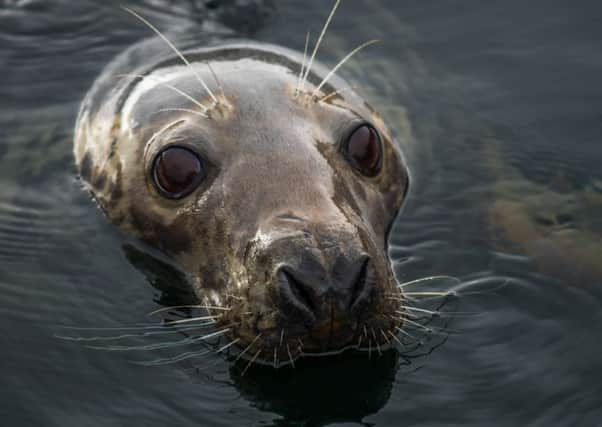Secret of how seals hold their breath revealed


The mammals are able to spend around 90 per cent of their lives at sea holding their breath, tracking and catching prey, without starving their brains of oxygen.
Researchers studying the animals discovered that they have an unusual version of the “dive response”, which is triggered in most mammals when they put their face underwater.
Advertisement
Hide AdAdvertisement
Hide AdThe phenomenon, which is also present in human beings, ensures that oxygen is saved for the brain to use when it is impossible to take a breath, by reducing the heart rate and redistributing blood flow.
The scientists found that unlike most other animals, seals can trigger their dive response before putting their face underwater, allowing their bodies to be as efficient with oxygen as possible.
In order to make the discovery, researchers used a tracking device similar to a FitBit to monitor real-time changes in seals’ blood volume and the oxygenation of their brains and blubber.
They adapted existing bio-medical technology, which relies on light emitted from LEDs in contact with the skin, to measure the changes in the seals as they happened.
The resulting study, published in the academic journal PLOS Biology, was a collaboration between scientists at the universities of St Andrews and Abertay.
Lead researcher Dr Chris McKnight, at the University of St Andrews, said: “Seals spend 90 per cent of their time at sea holding their breath and have to be incredibly efficient at managing oxygen to find and catch prey.
“This ability to hold their breath for such prolonged periods makes seals a unique physiological model to investigate tolerance to low oxygen, and oxygen management in breath-hold diving.
“We found that seals can initiate the dive response without having to dive. This means that by the time they are ready to dive they are already in oxygen conservation mode, which helps them save as much oxygen as possible.
Advertisement
Hide AdAdvertisement
Hide Ad“This discovery provides a new perspective on the capacity to control the body’s fundamental physiological responses.”
Dr Kimberley Bennett, at the University of Abertay, said: “We used a medical imaging technique and showed that it works under very tough conditions. Using wearable NIRS technology has given us amazing insights into how seals manage oxygen while they are underwater.”